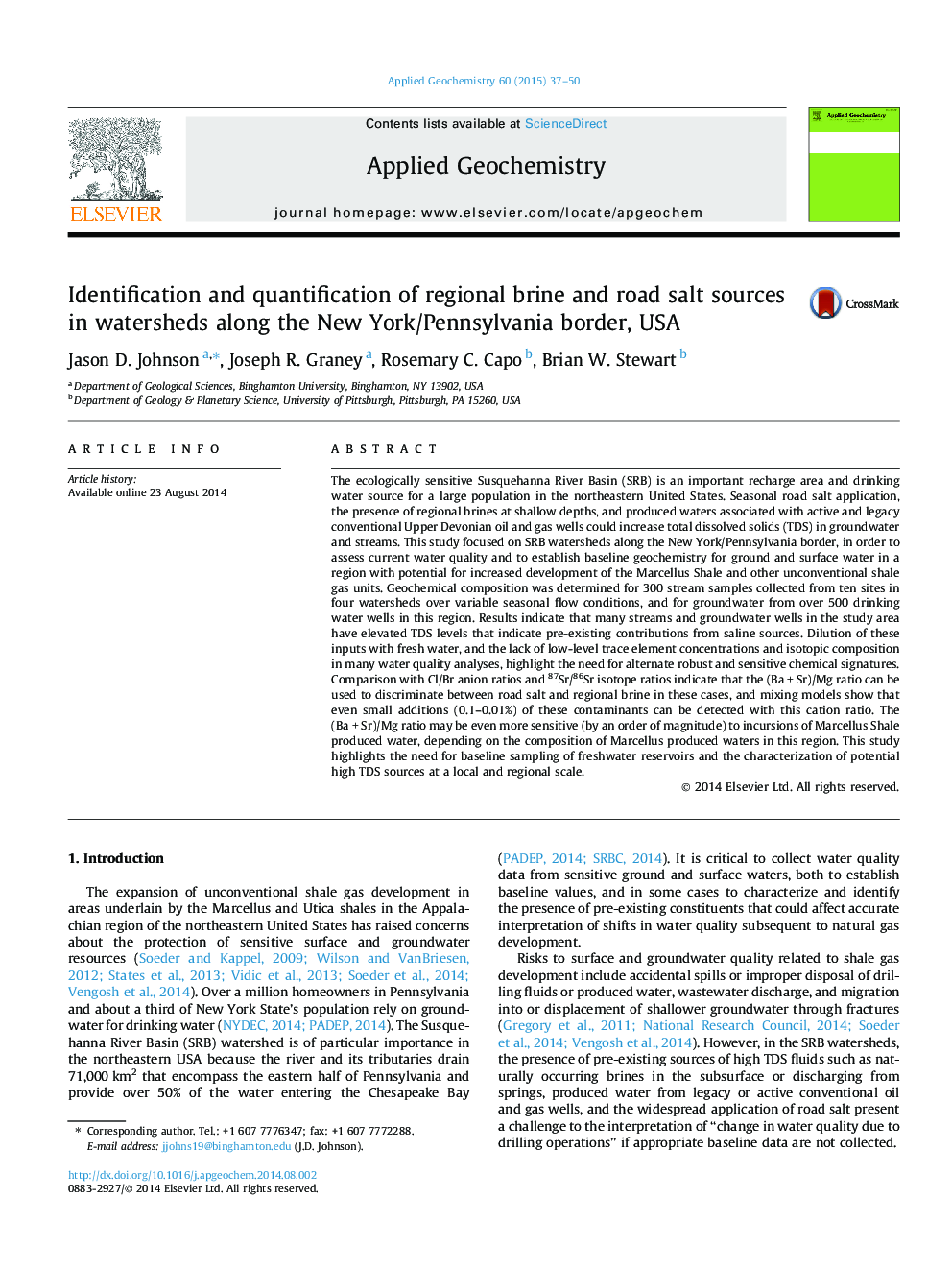| Article ID | Journal | Published Year | Pages | File Type |
|---|---|---|---|---|
| 4435639 | Applied Geochemistry | 2015 | 14 Pages |
•800 Baseline surface and groundwater samples from Upper Susquehanna River Basin.•Integration of (Ba + Sr)/Mg and Cl/Br ratios to distinguish brine sources.•Sr isotope data support use of Salt Springs as case study brine migration site.•Pre-drilling high TDS sources from road salt and regional brines prevalent.•Discharge and geochemical data can be used to quantify brine contributions.
The ecologically sensitive Susquehanna River Basin (SRB) is an important recharge area and drinking water source for a large population in the northeastern United States. Seasonal road salt application, the presence of regional brines at shallow depths, and produced waters associated with active and legacy conventional Upper Devonian oil and gas wells could increase total dissolved solids (TDS) in groundwater and streams. This study focused on SRB watersheds along the New York/Pennsylvania border, in order to assess current water quality and to establish baseline geochemistry for ground and surface water in a region with potential for increased development of the Marcellus Shale and other unconventional shale gas units. Geochemical composition was determined for 300 stream samples collected from ten sites in four watersheds over variable seasonal flow conditions, and for groundwater from over 500 drinking water wells in this region. Results indicate that many streams and groundwater wells in the study area have elevated TDS levels that indicate pre-existing contributions from saline sources. Dilution of these inputs with fresh water, and the lack of low-level trace element concentrations and isotopic composition in many water quality analyses, highlight the need for alternate robust and sensitive chemical signatures. Comparison with Cl/Br anion ratios and 87Sr/86Sr isotope ratios indicate that the (Ba + Sr)/Mg ratio can be used to discriminate between road salt and regional brine in these cases, and mixing models show that even small additions (0.1–0.01%) of these contaminants can be detected with this cation ratio. The (Ba + Sr)/Mg ratio may be even more sensitive (by an order of magnitude) to incursions of Marcellus Shale produced water, depending on the composition of Marcellus produced waters in this region. This study highlights the need for baseline sampling of freshwater reservoirs and the characterization of potential high TDS sources at a local and regional scale.
